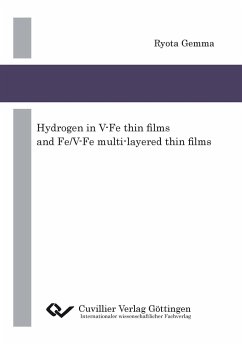Ever since the energy crisis in 1970¿s, hydrogen (H) has been regarded as one of the carbon-free secondary energy sources. In this context, hydrogen storage materials have been considered as possible candidates of clean energy storage media (see e.g. website of Department of Energy in US [DOE]). Hydrogen is the smallest and the lightest element and thus can be easily absorbed in interstitial sites of metal lattice. A pioneering work in this field is known by Sieverts [Siev29]. In some of metal alloys with tailored composition, considerable amount of hydrogen (several wt%) can be reversibly stored through metal/metal hydride (MH) phase transition, just by controlling pressure or temperature [Vught70]. Practically, some of them (LaNi5, TiFe) are really easy to handle and have already been utilized for technical applications like in fuel cell system [Iwas03] or in MH refrigerator [Uchi04] after intensive studies and developments in this field. Owing to its extraordinary high volume density and high stability, such metal hydrides still hold advantage to other storage methods like liquid hydrogen or high-pressure H2 gas tanks. Currently, further research and development is on the way focusing on improvement of gravimetric hydrogen density and reaction kinetics [Orimo07, Dornh07].








